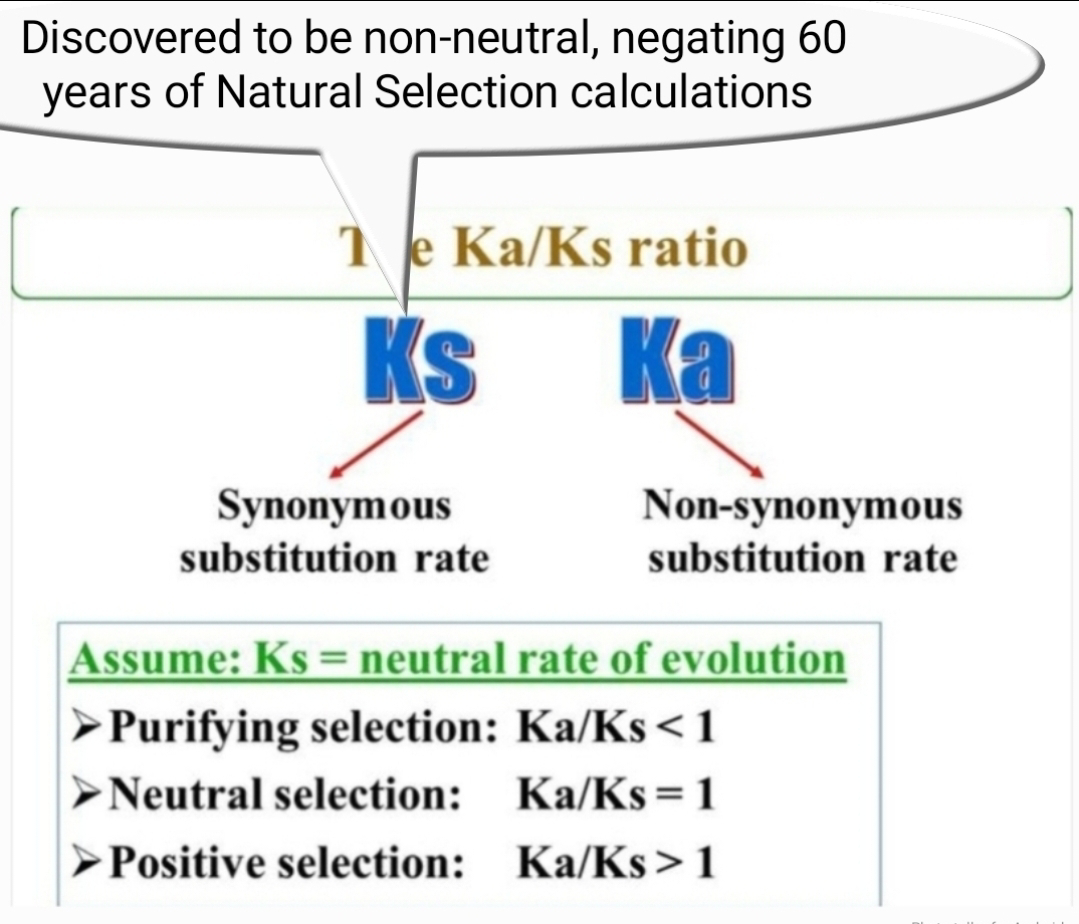Non-neutral synonymous mutations challenges decades of Neo-Darwinian Ka/Ks ratios
The journal article "The impact of non-neutral synonymous mutations when inferring selection on non-synonymous mutations" investigates the critical assumption of synonymous neutrality in evolutionary genetics, specifically concerning its impact on inferring the distribution of fitness effects (DFE) of nonsynonymous mutations. Traditional methods rely on synonymous variants as a neutral baseline to estimate demographic parameters, which are then used to model the DFE of nonsynonymous changes. However, evidence suggests that synonymous mutations are not always neutral, potentially affecting downstream analyses.
The study employed simulations using SLiM and the DFE inference method Fit∂a∂i to test the robustness of DFE estimations when synonymous sites are under selection. The findings reveal that selection on synonymous mutations can lead to significant biases. Firstly, it results in the incorrect inference of recent population growth during demographic parameter estimation. Secondly, it inflates the proportion of highly deleterious mutations in the inferred DFE of nonsynonymous sites.
This is significant because accurate DFE estimations are crucial for understanding evolutionary processes. The DFE provides a fundamental description of how selection shapes genetic variation within a population. Misinterpreting the DFE can lead to flawed conclusions regarding the developmental forces acting on genes.
The research challenges the long-standing assumption of synonymous neutrality. It demonstrates that even subtle selection on synonymous sites can have substantial repercussions for developmental analyses. The observed misestimation of demographic parameters, primarily population growth, is identified as the key driver of inaccurate DFE inferences.
This study underscores the need for caution when interpreting developmental analyses that rely on synonymous sites as a neutral reference. It highlights the importance of developing more sophisticated models that account for potential selection on synonymous mutations. The findings have implications for various fields, including population genetics, evolutionary biology, and even medical genetics, where accurate DFE estimations are essential for understanding disease-related mutations. Ultimately, this research calls for a reevaluation of traditional methodologies and promotes the development of more robust approaches to infer the DFE.
The article directly challenges the traditional application of the Ka/Ks ratio, a cornerstone of neo-Darwinian evolutionary analysis.
The Ka/Ks ratio, comparing nonsynonymous (Ka) to synonymous (Ks) substitution rates, relies on the fundamental assumption that synonymous mutations are selectively neutral. Ks is used as a proxy for the neutral rate of evolution, against which nonsynonymous changes are compared to infer selection. A Ka/Ks ratio greater than 1 suggests positive selection, while a ratio less than 1 indicates purifying selection.
This research demonstrates that synonymous mutations are not always neutral. Selection acting on synonymous sites significantly skews the estimation of demographic parameters, particularly population growth, which are crucial for accurate DFE inference. Since the Ka/Ks ratio also depends on accurate estimations of demographic parameters, the ratio will also be skewed.
The article shows that selection on synonymous sites can lead to the misinterpretation of the DFE of nonsynonymous mutations, inflating the perceived strength of purifying selection. If the "neutral" Ks is not truly neutral, but influenced by selection, it no longer provides a reliable baseline.
Consequently, Ka/Ks ratios calculated using this flawed baseline can lead to inaccurate conclusions about the selective pressures acting on protein-coding genes.
This directly contradicts the simplified view of synonymous mutations as passive genetic changes, a view that underpins the traditional use of the Ka/Ks ratio. The research suggests that evolutionary analyses must account for the potential selective effects of synonymous mutations, requiring more sophisticated models beyond the basic Ka/Ks framework. It calls for a reevaluation of how we interpret evolutionary rates and selection, highlighting the complexity of evolutionary processes beyond simplistic assumptions.






Comments
Post a Comment